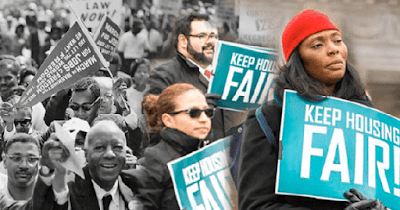Enforced by the Department of Housing and Urban Development (HUD), the Fair Housing Act is intended to protect the buyer or renter of a dwelling from seller or landlord discrimination. Also known as Title VIII of the Civil Rights Acts of 1968, Congress passed the act to hopefully impose a far-reaching solution to the national problem of unlawful discrimination in housing.
Simply put, the Fair Housing Act exists so that everyone who applies for housing has the right to be treated fairly and the same. Before you think about renting or purchasing a home, you should know about the Fair Housing Act. Here’s all the important information simply explained so that everything is easy to remember.
What to Know About the Fair Housing Act
- Creation
- Classes Protected
- Color
- Disability (was not added until 1988 and ranges from mobility, visual, hearing, and cognitive disabilities)
- Race
- National Origin
- Sex
- Familial Status
- Religion
- Three-Part Goal
- Refusing to rent, sell, or negotiate housing
- Making housing unavailable or lying about the availability of housing
- Denying housing
- Refusing to make or purchase a mortgage loan
- Setting different requirements for purchasing a loan
- Refusing to make information about the loan available
- Make discriminatory statements
- Threaten or interfere with anyone’s fair housing rights
- HUD Enforcement
- Examples of Discrimination
- Harassment
- Steering
- Subtle Discrimination
- Ignored Accessibility Requirements
- Rules Against Children


